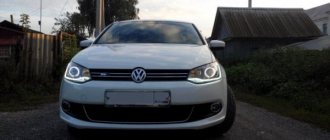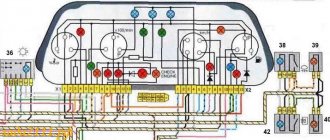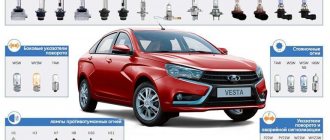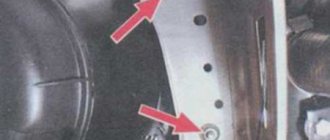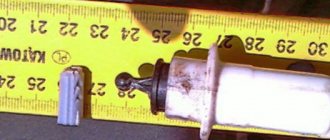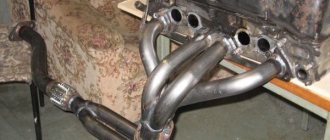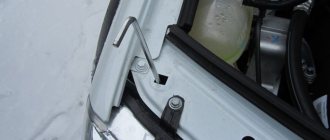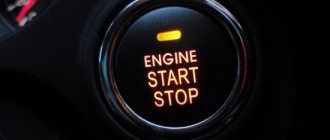Good reliability and high luminous efficiency are good incentives for the widespread use of LED lamps, and they have not spared cars. Many automakers already install LED lamps in the headlights of their cars, but installing LEDs yourself may result in a fine from the traffic police or deprivation of your license for up to one year.
In this article, we tried to identify and systematize all the issues of installing LED light sources on a vehicle and highlight the main nuances of interaction with the traffic police inspector in the event of claims against the driver regarding violations of the lighting devices.
Why you shouldn't change halogen lamps to light-emitting diode (LED) lamps
Independently replacing halogen lamps with LEDs on car headlights, oddly enough, is a popular modification that is used by a considerable number of motorists around the world. Why do people do this? In this way, they suggest, road safety at night can be improved. After all, as you know, modern LED headlights illuminate the road much better than old halogen ones, which means the level of security should be higher. Is this so, let's try to understand our material using expert opinion.
And to begin with, I would like to note the following, so to speak, main idea-caution of the post: maybe LED headlights really look brighter than incandescent lamps, but “ looking brighter” and “ shine better” are not the same thing. This was quite clearly explained by a foreign expert who has been dealing with the issue of car lighting devices and the modernization of car headlights using LEDs for many years.
Installing LEDs where halogen bulbs should be installed is not really a smart upgrade
The expert's name is Daniel Stern, he lives in the USA and, judging by his blog and customer reviews, is very well versed in the correct modernization of cars. He kindly revealed the secrets and answered a number of important questions that few people asked themselves about automotive lighting.
What exactly do we mean by LED headlights?
In this article we will talk about the types of LED lamps (note: the abbreviation LED stands for “Light Emitting Diode”) that are placed in the housing of car headlights, the latter of which were originally designed to work with halogen incandescent lamps. Typically, such an installation is simply called “LED lamps.”
Of course, we will not consider here cars that are equipped with LEDs from the factory, or so-called high-intensity discharge (HID) lamps and other offshoots. LEDs only.
Punishment for installing LEDs in headlights in Russia in 2022
Also, do not forget about such a disadvantage as legislative restrictions on the installation of such diode lamps in headlights intended for halogens (or unauthorized installation of headlights in cars that also have LEDs installed on similar models).
photo: autoevolution.com
In this case, there is a violation of paragraph 3.1 of the list of faults and conditions under which the operation of vehicles is prohibited:
The number, type, color, location and operating mode of external lighting devices do not meet the requirements of the vehicle design.
In short, in 2022, after the published resolution of the Plenum of the Supreme Court of the Russian Federation No. 20 of June 25, 2022, in most cases the punishment for a driver using LEDs in headlights is a fine of 500 rubles. Deprivation of rights is imposed only if light bulbs are installed in which both the color of the lights and the operating mode do not meet the requirements.
see also
The Supreme Court clarified in which cases a fine should be issued for xenon, and in which it should be deprived of rights
Legality of installation
Suppose you have at your disposal a Niva, a Kia Rio, a domestic Lada Granta, or even a Japanese Mitsubishi ASX. While the brand and model are not of fundamental importance.
You read the reviews and realized that LED headlights are very often installed by other drivers, and in most cases they are satisfied.
Such optics are often mounted:
Does it make sense to put LEDs in lamps?
photo: vintagecarleds.com
LEDs, when properly placed and properly adjusted (in theory), can convert minimal power input into large amounts of light, which makes the technology attractive overall.
All things being equal, it appears that replacing energy-hungry discharge lamps with brighter, lower-power LEDs kills two birds with one stone. Plus, LED has an “instant on” effect and visual clarity of light (which in practice tires drivers on long trips more due to the sharp transition from bright light to dark than the soft gradient of conventional discharge lamps and even xenon), which forces experimenters put them on your cars. Also, and this is one of the main advantages, LEDs can give old cars a modern style.
Simply put, LED headlights are easy-to-install, easy-to-access “toys” with a flair of safety and technology that make cars look cooler.
Why won't LED bulbs fit into regular headlights?
Most car headlights are more than just a bulb in a reflector attached to a positive and negative light. This is truly a high-precision system, honed by generations of engineers. In the scientific community, there is even a separate direction for studying the influence of light, the basis of any engineering thought - it’s called photometry.
Photometry is a scientific discipline common to all branches of applied optics, on the basis of which quantitative measurements of the energy characteristics of the radiation field are made.
Intensity, or power of the luminous flux (the unit of luminous intensity is measured in candela), luminous flux , measured in lumens (Lm), illumination , luminous efficiency and many other equally important parameters.
Right down to reflectors (a complex system of mirrors), which have a strictly adjusted shape for each type of light source. For elliptical optics - one, for dual incandescent H4 lamps - another. Well, for LEDs - the third.
And all this so that the light emitted by the lamp hits the road in such a way as to ensure maximum visibility for the driver without blinding oncoming traffic.
Most LEDs do not emit light from the same location in the headlight housing as incandescent bulbs, and from that point on they are doomed to produce mediocre results!
Design
In order for lamps to illuminate the road well, it is very important that their design meets several parameters.
Firstly, the shape and location of the LEDs (groups of LEDs) should be as close as possible to the shape and location of the filament of halogen lamps. Otherwise, for example, with lamps with COB chips, most of the light will go to the sides, up and into the eyes of oncoming drivers.
Secondly, preference should be given to lamps in which LED chips are mounted on a copper double-sided printed circuit board about 1 mm thick. This solution affects the focusing of light and the removal of heat from the LEDs.
Thirdly, pay attention to the shape of the low beam reflector (metal petals near the LEDs further away from the base). It should be shaped like half cups and made of metal with a mirror finish. It is this design that provides a clear line of light and shade and high-quality illumination of the road surface.
What about LED bulbs that actually emit a beam of light correctly?
photo: eneltec-led.com
As we see, large players are already entering the fight for buyers. Perhaps they make the perfect replacement parts?
As an expert from the USA says:
“A number of the more prominent companies selling, developing and testing LED HID headlight bulbs in 2022 are trying to mimic incandescent bulb placement to solve this problem, but that’s only part of the equation.”
Daniel Stern also explains why an LED with physical parameters similar to a regular light bulb (identical size and shape) will not work in reality:
“The longitudinal position of the light source (where the light source starts and ends as measured by a basic incandescent light bulb) is only one important aspect. But it's not just him. The shape, size, orientation and distribution of the light beam, as well as the brightness of the source, are also extremely important. Getting one out of five correct is better than zero out of five, but it's still 20 percent of par and that's a very bad score."
“If we could wave a magic wand and create a cylindrical LED emitter the same size as an incandescent lamp with the required brightness and lumen output, then the incompatibility would disappear. This is technically impossible for the foreseeable future, so we mostly have flat 2D LEDs instead of the 3D shape of a traditional light bulb.”
Daniel continues:
“There is a certain space between two flat LEDs located back to each other (there must be, otherwise there will be nowhere to place the material that removes heat from the heating of the working lamp), thus, our light source is radically different from the usual lamp both in shape, size, and and by the position and distribution of light. Even if we made every effort to place the emitters in exactly the same longitudinal position as the original filaments, this would not work for a number of reasons, both physical and economic.”
List of documents for driving a trailer on a passenger car
- for long-range illumination, luminous flux from 1500 lm;
- for the neighbor at least 1000 lm;
- total power of at least 17 W with an efficiency of 100 Lumens per Watt;
- the presence of an active or passive cooling radiator.
Please note that manufacturers often indicate the total brightness. It’s also not worth buying too bright ones, since this is more of a marketing ploy than a real benefit.
Fog lights
Most often, motorists change halogens to LEDs in PTFs, using base H11 and H8. They do not perform a primary role, so traffic police officers have a minimum of questions about them.
But due to the wrong approach, many choose 400-700 lm light bulbs. In the end, it turns out that halogens worked much better.
To ensure that the LEDs in PTF do not disappoint you, choose a brightness of at least 900-1000 lm. The less powerful ones become meaningless and useless.
A few years ago, mass production of special diodes with a yellow cap and position adjustment began. This allows you to make them into a full-fledged imitation of a halogen lamp. With such optics, traffic police officers will definitely not be able to find fault.
parking lights
The base used here is W5W T10. Marking T10 T5 is also found. The assortment is huge, which is somewhat confusing for car owners.
Nominally the power should be 5 W, and the brightness should be from 50 lm. There is no point in increasing these parameters excessively. The more powerful the LEDs, the faster they fail. This is due to overheating.
Most motorists prefer devices with 1-2 watts and 50-100 lm.
Whether to install diodes or not is a purely personal decision. I just want to suggest when it’s not worth doing this, and in what situations there are no real obstacles.
Thank you all for your attention! Subscribe, leave comments, ask questions!
Again, pay attention to the headlight reflectors.
As we said above, the problem is that reflectors designed for halogen lamps are inherently incompatible with the luminous output of LEDs.
“... the distribution of the light beam during low and high beam operation is very different from what the optics of a conventional headlight were designed for. The resulting light pattern will not be what it should be, will not be consistent with the vehicle design, and will be suboptimal in all respects.”
The expert's allegory is as follows:
“I wear glasses, just like my neighbor. It would be harmful and counterproductive for us to change them because even if they fit me and I look amazing in them, the optics are unlikely to match my eyes (even if I think I can see normally with them).”
“And it’s not because I chose the neighbor on the left rather than the neighbor on the right. The same applies to the glasses of both neighbors, even if one pair has glass lenses and the other plastic, one set has round lenses and the third has rectangular ones, one set is photochromic and the other is not. The main thing is that one person will be more far-sighted than me, and the other will be more short-sighted, etc.”
Translating the explanation to headlights, the LEDs in headlight housings designed for halogen bulbs direct the wrong amount of light to the wrong places.
Most LED bulb reviews online are useless, and neither are the criteria they often quote (sharp edges, color temperature, etc.)
Recommendations for selection
I hope the installation issue has been sorted out. If you decide to install LED lamps in halogen headlights, it is entirely at your own peril and risk.
I advise you to act within the law, otherwise you will get tired of constant conversations with traffic police officers, fines and other proceedings.
If you can install LEDs, all that remains is to answer the question of which ones are better.
I can’t say for sure which company’s products are best to buy. From personal experience, I tried lamps from Philips. I was pleased and still use it. But if you want, look for alternative solutions. Much also depends on what kind of lens and base you need.
LEDs are classified depending on the type of base. They are divided into:
- H1;
- H3;
- H4;
- H7;
- H8;
- H9;
- H11;
- HB2;
- HB3;
- HB4.
I propose to consider the main positions, dividing the choice of LEDs into several categories.
Namely:
- low beam;
- further;
- near/far;
- fog lights;
- dimensions.
We will study each of the points separately.
Low beam
For low beam headlights, the H7 base is mainly used. H11 is used a little less often. The LEDs are located in the upper part, the light stream is reflected downwards from the headlight reflector.
For low beam it is recommended to use LED with:
- power from 12 W;
- light flux from 1000 lm;
- radiator in the design.
When purchasing LEDs for such purposes, you need to consider several important nuances. So that LED installation does not become an unpleasant surprise for you.
We are talking about the following pitfalls:
Why shouldn't you trust experiments from the Internet?
photo: car-revs-daily.com
“If we are talking about photo and video experiments from the Internet, they will be misleading, even if the photographer has the best intentions. Pixels and film have a much narrower dynamic range than the human visual system, so even a photographer who carefully keeps all camera settings identical when photographing under different light beams cannot provide more than generally general comparative information: a sharper edge, for example versus less clear or a wider beam versus a narrower one.”
But even if you have comparable light sources in front of your eyes, you may not be able to figure out the best light just by being "brighter."
Here, measurements and professional equipment with specialists are needed, and not to “measure” by eye and trust false information, where also no standards, GOSTs are provided and no devices are used, such as a regoscope.
So do LED bulbs work in regular headlights? Opinion of specialists from the magazine “Behind the Wheel”
In order not to resort to the opinion of only one foreign expert, we will present the arguments of domestic experts from the magazine “Behind the Wheel”. In an extremely revealing and very interesting review article-experiment “LEDs instead of halogens in standard headlights: a complete failure!” experts described the test results of five LED models.
The experiment consisted of several tests. We will briefly describe them and the results (read more about the test on “Behind the Wheel” by clicking on the link above).
1. Regloskop (a device familiar to everyone after undergoing maintenance) - checks the light distribution: three out of five LED lamps failed the test;
2. The second, final practical test was carried out to determine compliance with the requirements of UNECE Regulation No. 112–00 regarding low beam. That is, according to GOST or the National Standard of the Russian Federation, which prescribes uniformity for the operation of automobile headlights. The result surprised even seasoned testers: ALL THE LAMPS FAILED THE TEST! Even the most expensive ones.
“All the LED light sources, one by one placed by the testing laboratory staff in the GAZelle headlight, blinded the oncoming driver, and the cheapest ones, in addition, refused to properly illuminate the right side of the road,” write experts from the automobile magazine.
Deceptions
On almost all modern cars, the on-board computer checks the headlights and all other lighting equipment. There are energy consumption standards that are invented by car manufacturers. So, if the low beam consumes less energy than normal, then the on-board computer can display an error on the dashboard. In rare cases, the lamps may blink or not turn on at all.
Installing a blende is a solution to the problem with low energy consumption. The deception consists of a fairly powerful resistor that consumes from 20 to 30 watts. Installation of the blende is only allowed outside the headlight, because it gets very hot and can cause harm.

